Tour of Nagaland 2022 | Day 12 | Dimapur – Kohima | 70 kms
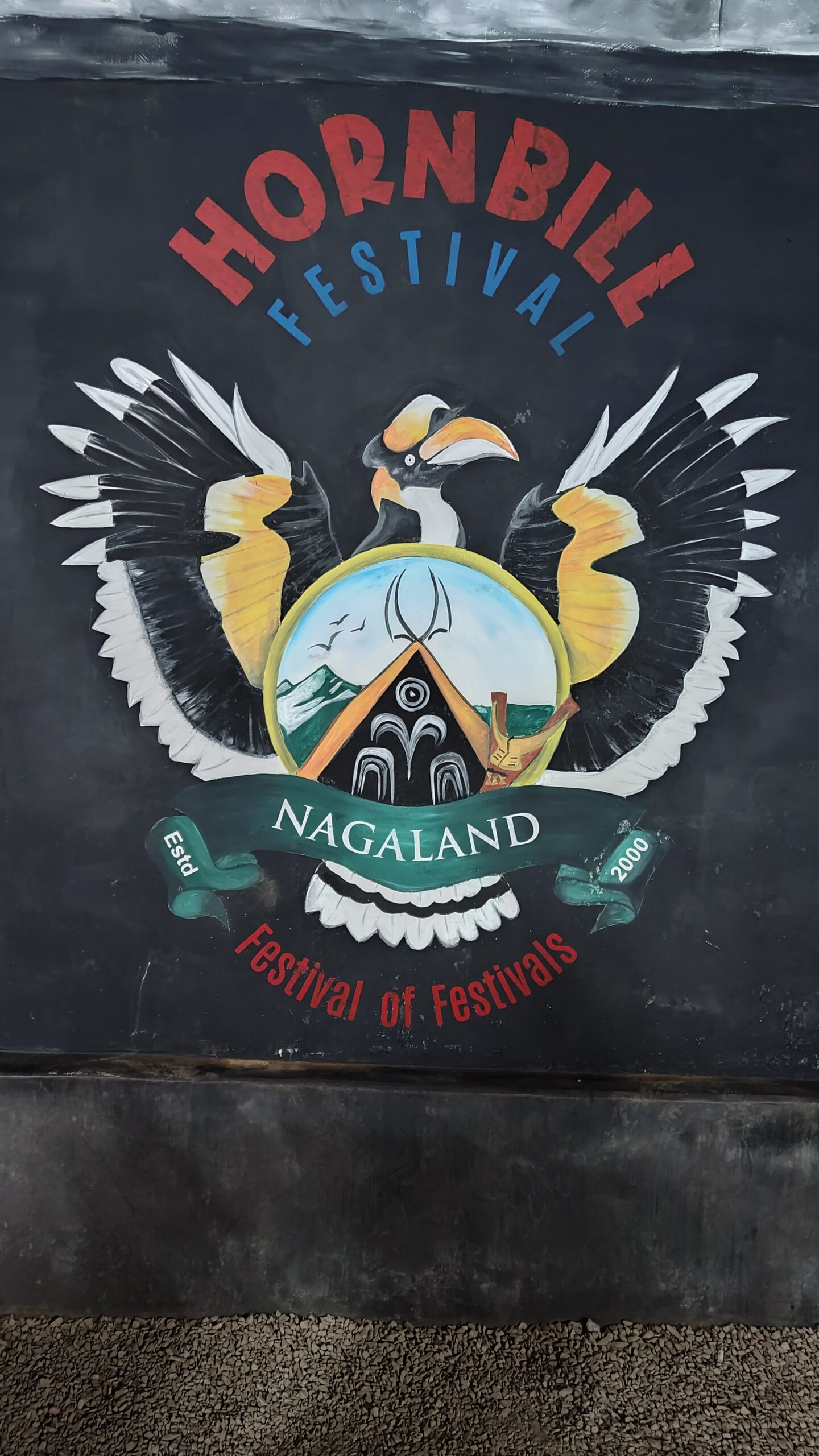
After 3 nights of sleeping in a tent, finally I had a comfy bed last night. It’s not that I do not like to sleep in a tent but who can ignore when you have a soft thick layer of cushion underneath you? I had slept well. There was no unpacking of the tent and other stuff. I started to get ready and most of my things were packed already. I hadn’t taken much out.
Today was the beginning of another chapter in the Tour of Nagaland where I was heading to witness the world-famous Hornbill festival where all the tribes from Nagaland come together for 10 days for an epic cultural get-together showcasing their art, music, and cultural talent, etc. Hornbill is the national bird of Nagaland whilst ‘Mithun’ is their national animal. So, whenever you visit Nagaland, you will see these 2 creatures depicted in the form of paintings artifacts, etc.

I hit the road around 11 am seeing off some local friends. The morning traffic was bad with long lines of cars. But, it was systematic and not haphazard and so I managed to get out quickly. Within no time, I was out of the chaos and I had a smooth tarmac under me. I could see the mountains beginning to appear from a distance.


The riding distance was not much so I was not pushing myself and thought of enjoying the scenery along the way. I was now surrounded by mountains riding on its serpentine roads. Most of the mountain slopes had pineapple cultivations and when I noticed a pineapple vendor at the roadside, I decided to stop and taste it as they were looking juicy.



The lady owner had cut the pineapples in the form of a big candy with a stick attached to it. It was for 10 rs. When I ordered one, she sprinkled salt and chili powder over it and gave it to me. Believe me, it was the best pineapple I ever had. Not satisfied with just one, I had 3 of them.
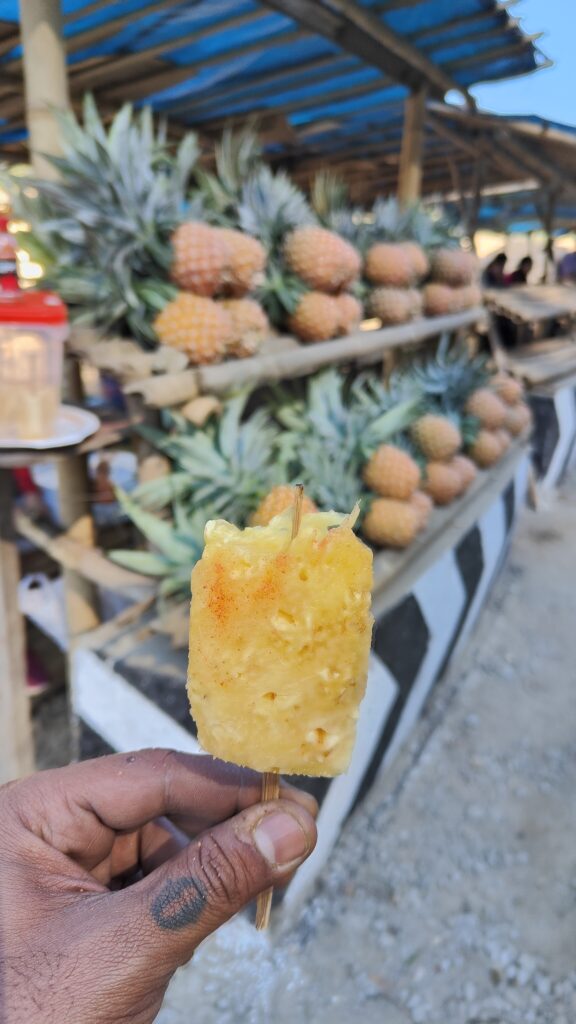
I was unable to start my bike as the ignition was not turning ON. I knew the main fuse might have blown since the fuel pump light was not glowing. I changed it from my spare and the bike came into life again. I let this thing off as a one-time issue and carried on ahead towards Kohima.
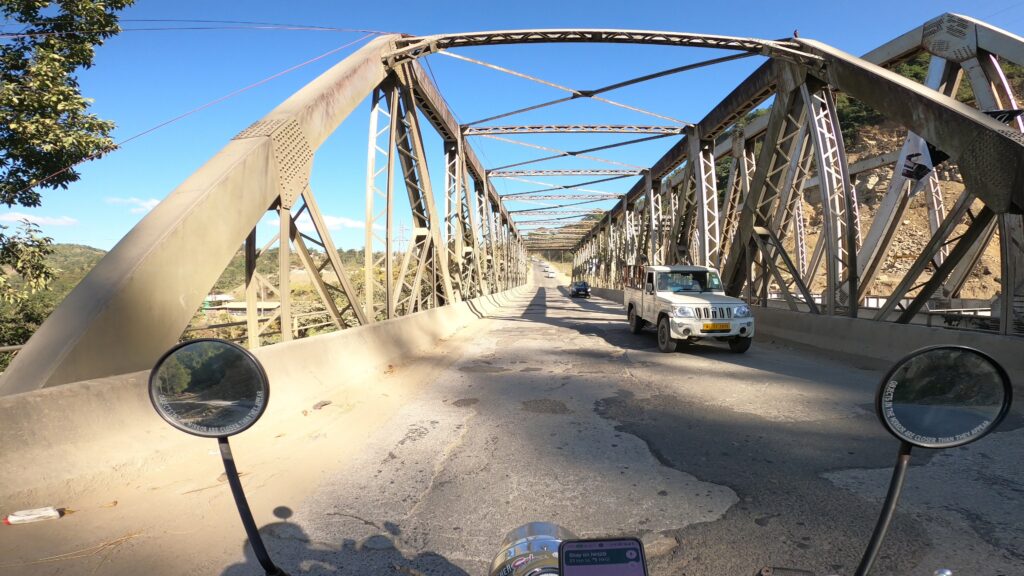

Highway no 29 was the main highway that linked the capital of Nagaland to the capital of Manipur which was Imphal. This highway experiences heavy movement of traffic, particularly trucks that ply on both sides and I assumed that was the reason the roads were badly damaged and had no time to repair it as it was busy always.




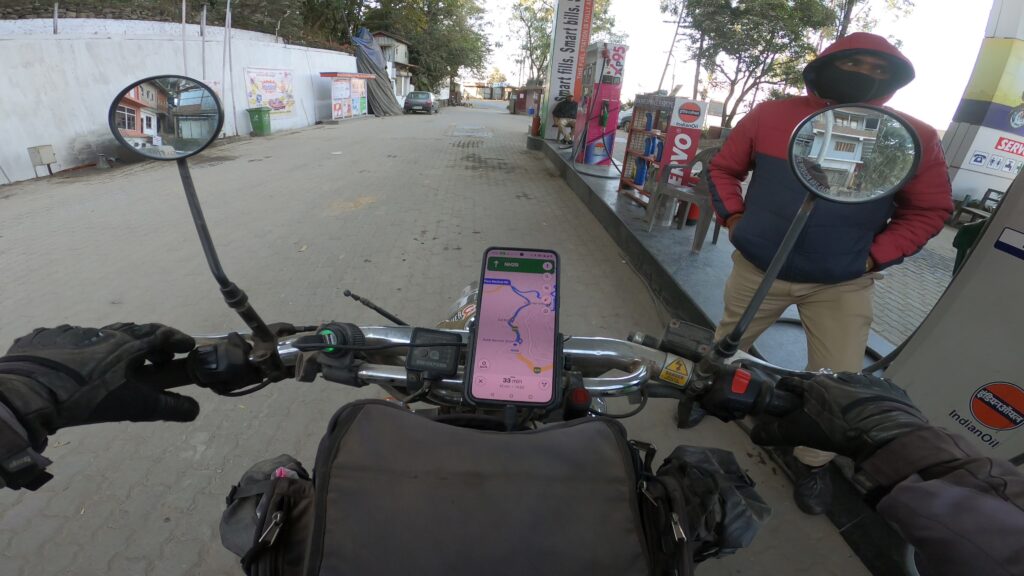
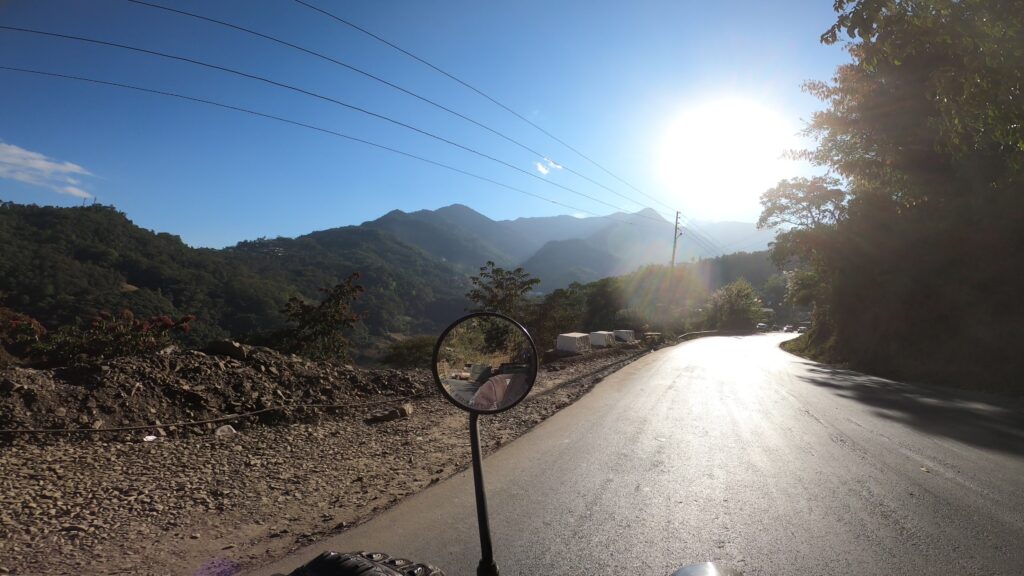
The mountain roads were all broken and damaged but some stretches of the highway before the turn-off towards the venue, the roads were freshly laid, possibly appeasing the foreign people to some extent. I entered the event area that was designated as Naga Heritage Village where the festival was being conducted every time. The road leading towards the main entrance was all lined up with parked vehicles. I went inside looking for a particular campsite from which the main festival area was within walking distance. Someone back at the rider’s meet had told me about this campsite which went by the name of ‘Kite Manja’ which was quite good in terms of reviews and facilities.
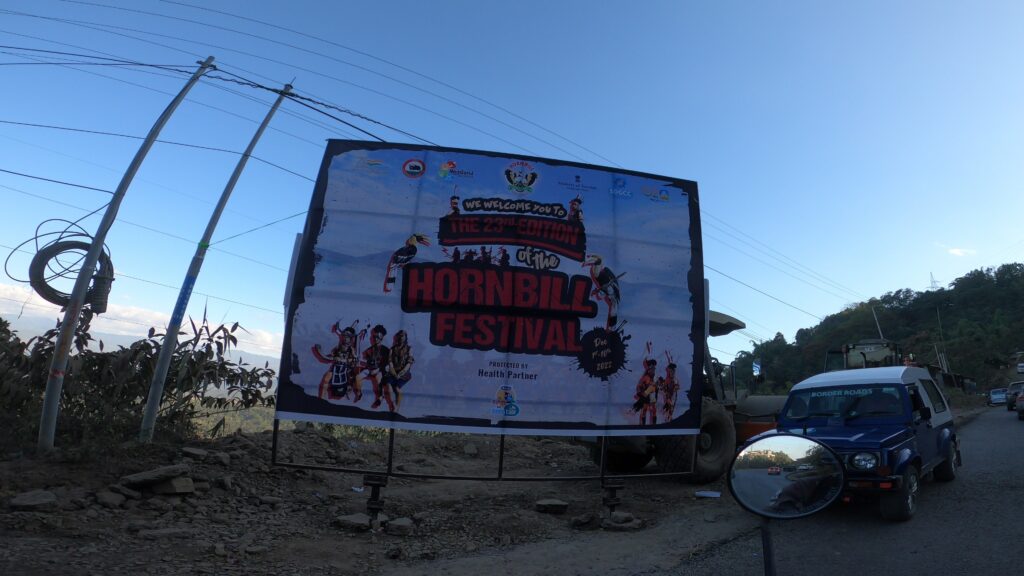


Finding the campsite didn’t take as long as it was situated on a mountain but their banners and posters guided the newcomers smoothly. When I entered the reception area through a narrow road line with Naga food stalls on both sides, I could see a large number of parked bikes from the rider’s meet already. Like me, many people had opted to stay here. I booked my place for 650rs per day for 3 nights with my tent and without food. The people managing the reception were young just like me and were very friendly in guiding me with all the details about the event.
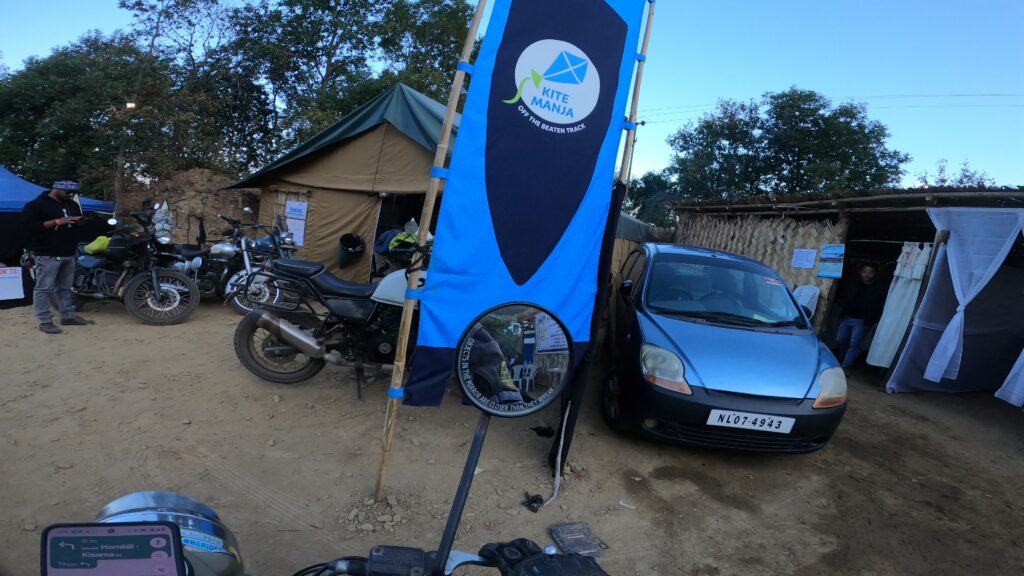

The campsite people got me a place to pitch my tent. I parked my bike near the community hall where the breakfast and dinner were to be served. The time was close to 2:30 pm. I moved all my luggage put it inside the tent got myself ready to explore the area. By now, the sun had almost gone behind the mountains and it was starting to get cold. I was aware of the dusk time which was around 5 pm. I put on my winter jacket and went walking to the arena.


The arena was quite crowded with many people around. There were also various other agencies advertising their products. There were car companies who were showcasing their vehicle line-ups. There was even a booth of the Indian Navy, which had set up a booth to advertise themselves and were offering the people to join the Indian Navy. Apart from that, there were various other news channel agencies covering the festival. A lot of eateries had been set up which included local food and many coffee shops.


The church was converted into a tourist information center and they helped me with a book and a guide map of Nagaland showing all the places of interest. The book had a detailed itinerary of the events happening daily from the 1st to the 10th of December which was quite useful. Apart from that, it also had information about the other sightseeing places in Nagaland and that became my ready-made guide.
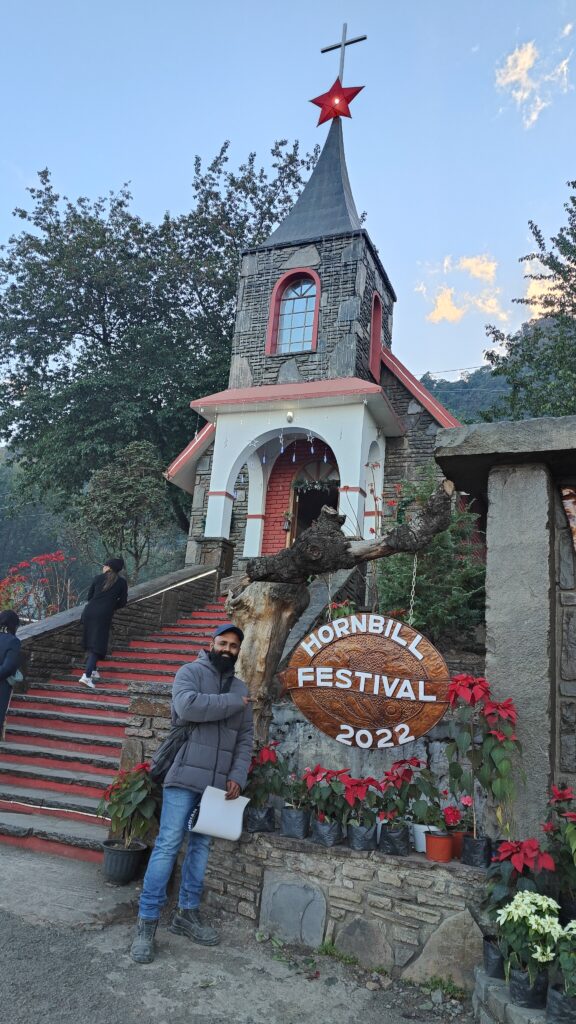

The area around the venue was beautifully decorated with a variety of flowering plants. Apart from the cultural programs, there was a war museum to be explored, arts and crafts exhibition stalls, a flowering plant show, and numerous small businesses showcasing and selling their locality products like handicrafts, food items, cloth items, etc.



Since the day was about to end, I decided to get a quick glimpse of what all things were on offer in this arena so that from tomorrow onwards, I would be able to explore it properly. Moreover, I heard about the festival timings, which were divided into 2 sessions. Morning from 10 am to 1 pm and then in the afternoon from 2 pm to 4:30 pm. The remainder of time was given to explore the other areas barring the cultural event.








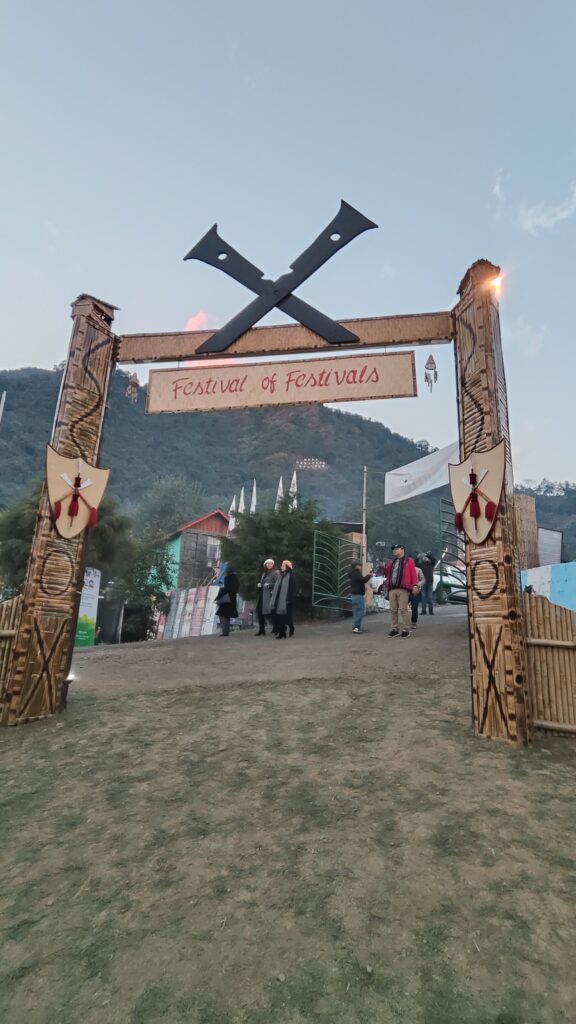
The dusk came quickly and it was dark soon. Apart from all the stalls and booths, there were tribe ‘Morungs’ situated permanently at the event. These morungs are nothing but what we call a House in general terms. There were close to 14-15 Morungs of each tribe spread across the location. They were the actual scale model of the typical tribal house. It had been decorated in such a way that it looked like the tribe was staying there. The Morungs were filled with all the necessary tribal items including utensils, fire pit areas, grain grinding areas, and weapons, etc. Even their traditional dresses were also displayed. On the outside, the tribe’s name was inscribed on a wooden plaque so that people could understand the house belonged to which tribe. There was an open area in front of each Morung where the local food belonging to that tribe was being served to the customers. It was a unique thing and the smell of the food being made over skewers was everywhere. You had a choice to even sit inside on the morungs and enjoy your food in front of the burning fire pit.
Almost all the Morungs had a table hanging from the ceiling on top of the fire pit where they used to keep the cut meat to preserve it and smoke it. This was done so that they would not rot and the smoked meat could be later used during cooking. The Morungs used Bamboo, Wood, and Rice Hay for building the houses. For the rooftops, some Morungs had used slate stone just like our traditional clay tiles to protect themselves from the natural elements.


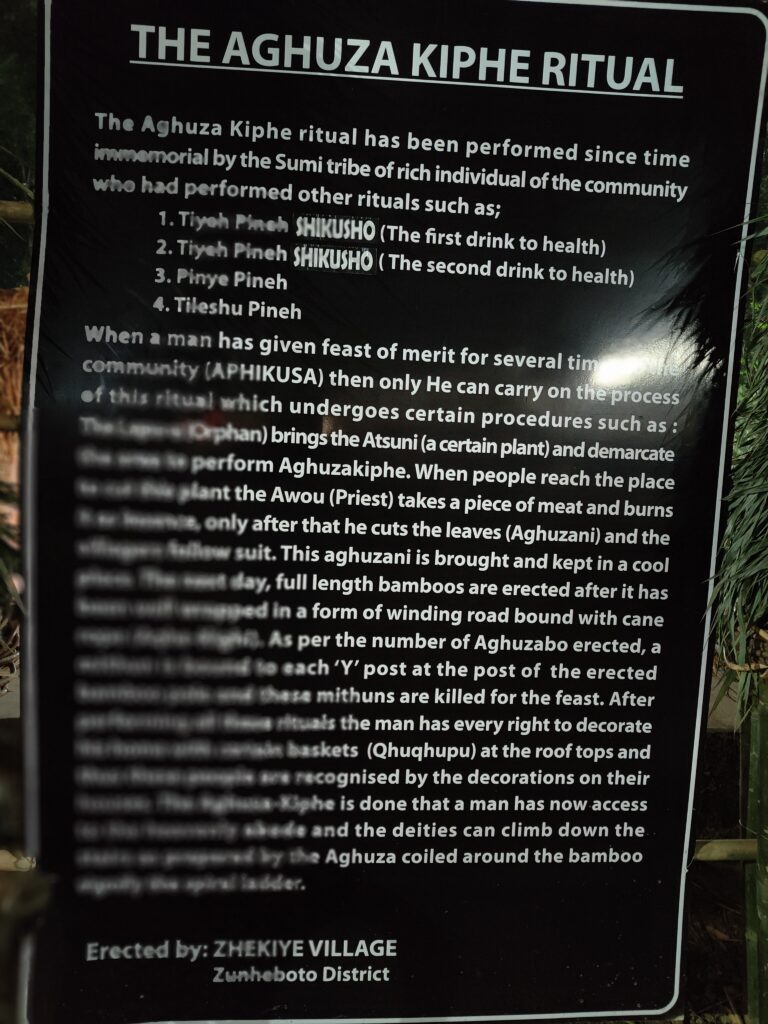



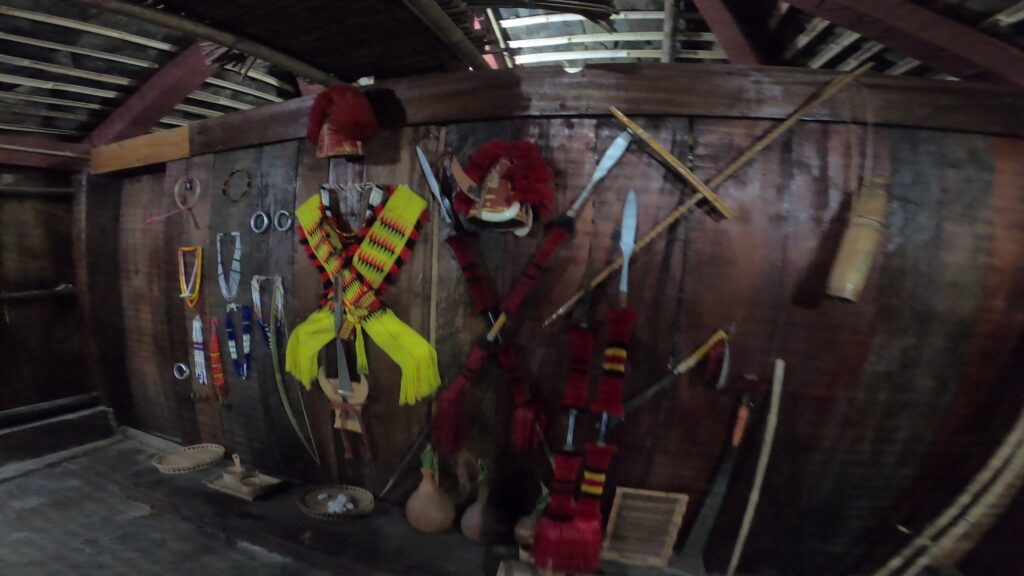

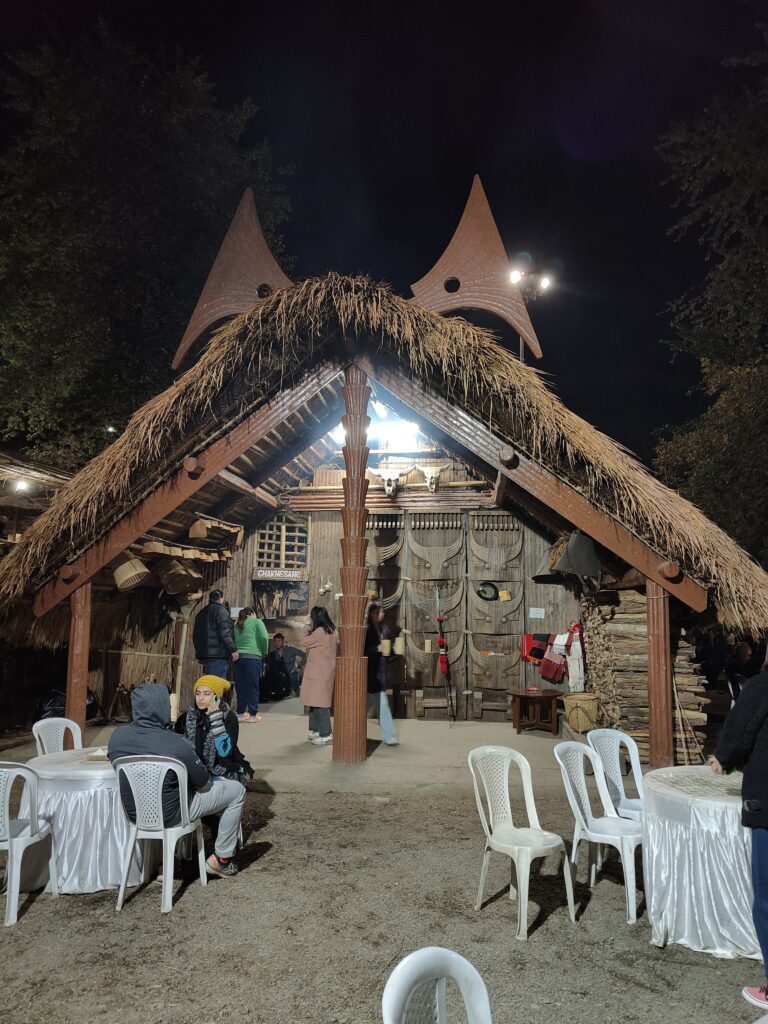
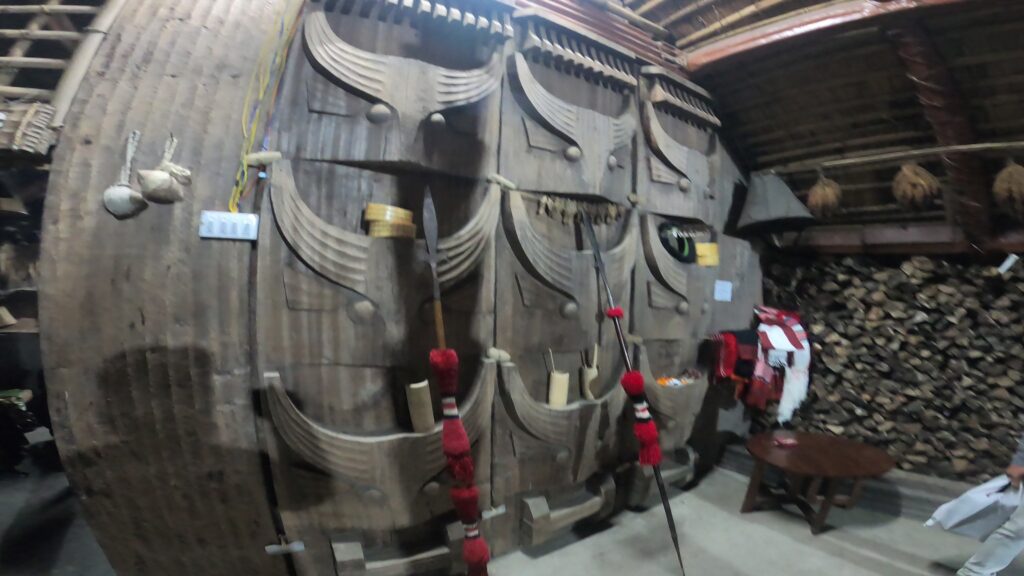















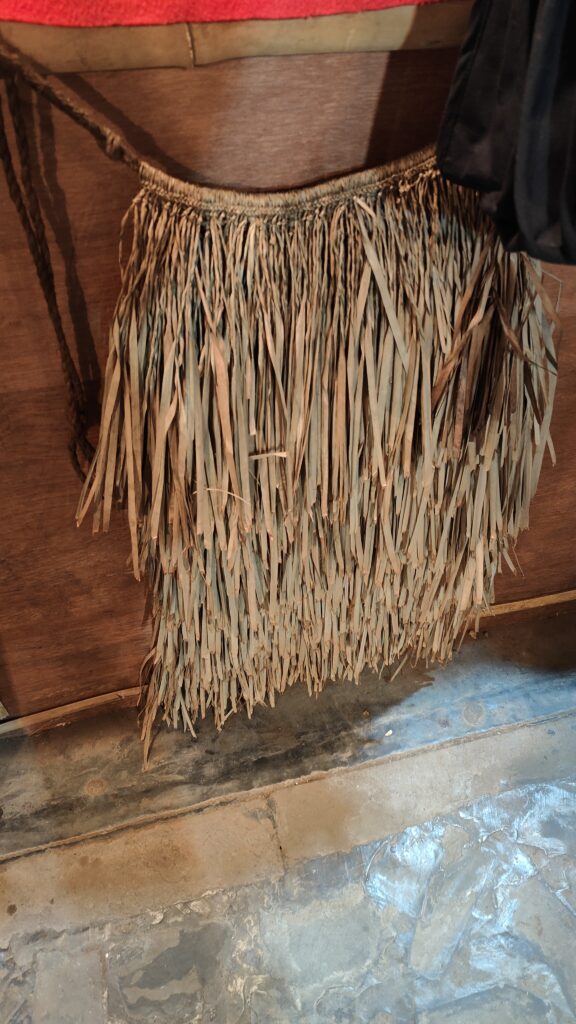

I felt like, I had already seen a lot on my 1st day at the festival. There were still many things to see and explore. Even the surrounding areas around the festival which I came to know later on through my newly acquired friends. I planned to cover all things till the time I was here. There was so much variety in food that had got me confused. Many handicraft items that had intrigued me. There had been too much walking for the day and as the music concert came to a close, I went for dinner at one of the Morungs where I tried their local dish before walking back to my tent for a good sleep. It was very cold at night.